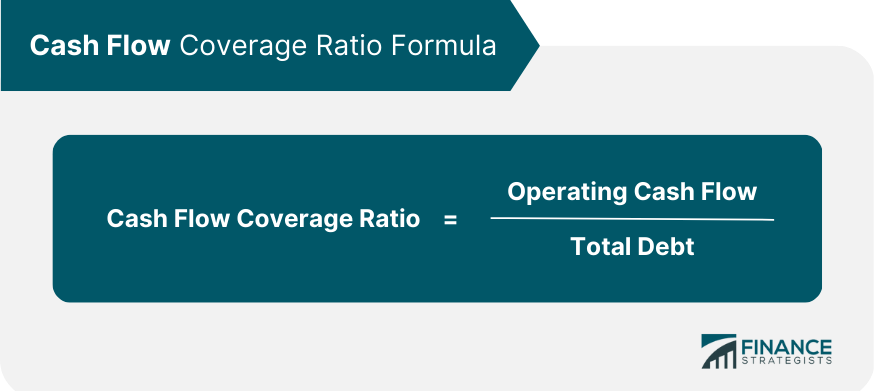

Whichever calculation yields a higher number reflects the better liquidity position of the company. The cash ratio or cash coverage ratio is a liquidity ratio that measures a firm’s ability to pay off its current liabilities with only cash and cash equivalents. The cash ratio is much more restrictive than the current ratio or quick ratio because no other current assets can be used to pay off current debt–only cash. The cash ratio formula looks at current assets such as cash and cash equivalents and divides that total by current liabilities to determine whether your business can pay off short-term debt. The cash coverage ratio is more specialized and uses net income rather than cash assets. Creditors like to utilize a cash coverage ratio since it reveals a company’s capacity to pay off debt promptly.
Analysis and Interpretation
Using this in conjunction with other financial calculations, such as return on retained earnings, investors can get a better sense of how well the company is using the earnings it generates. Ultimately, if the cash flow coverage ratio is high, the company is likely a good investment, whether return is seen from dividend payments or earnings growth. However, some stakeholders focus on a company’s cash resources more than its total assets. While the asset coverage ratio may include cash, it also considers other resources. These explore various aspects of a company’s ability to repay financial obligations. A coverage ratio is a metric that measures a company’s ability to service its debt and meet its financial obligations, including its interest payments and dividends.
Cash Equivalents
Since receivables may take weeks or months to collect, and inventory may take years to sell, this ratio may well give you the truest picture of a company’s liquidity position. This result means that the business in question can cover its interest expenses nearly 12 times over, leaving more than enough in cash to cover other obligations. Equity finance is straightforward and comes from the company’s shareholders. The coverage ratio is also called the interest coverage ratio or the times interest earned (TIE) ratio. Several other coverage ratios are also used by analysts, although they are not as common. When corporate interest rates rise, this may result in a decline in a company’s interest coverage ratio.
Video: CR or CCR (Formula, Examples) Calculation
Generally, companies with higher cash coverage ratios are considered less risky for investors as they have a larger cushion of resources available to meet their obligations. The cash coverage ratio also provides significant insights into a company’s liquidity position. If this ratio is low, it implies that the company does not have enough resources to cover its interest obligations. The debt service includes all principal and interest payments in the near term.
What is Accounts Receivable Collection Period? (Definition, Formula, and Example)


In business, an adequate cash flow coverage ratio equates to a safety net if business cycles slow. In this ratio, the denominator includes all debt, not just current liabilities. This ratio is a snapshot of your company’s overall financial well-being.
- Properly evaluating this risk will help the bank determine appropriate loan terms for the project.
- The current cash debt coverage ratio is a quantitative value that gauges the liquidity of a company.
- Applying formulas to specific line items of the financial statements enables calculations of the quantitative measures, also referred to as ratios.
- Depending on your company’s accounting methods, these numbers may display together or individually.
Formula
In terms of business, liquidity does more than generate profits to continue day-to-day activities. This approach enables comparisons of an entity’s current year financials with its past year performance, competitors’ current year performance, or the overall performance of the sector or industry. Companies can improve the Cash Coverage Ratio by increasing EBITDA, reducing debt, or refinancing loans at lower interest rates. In this guide, we will delve into the Cash Coverage Ratio, how to calculate it, what it reveals about a company, and why it is indispensable for both investors and corporate managers. Companies with high ratios tend to attract more investors, showing that management is taking proactive steps toward managing their funds responsibly.
However, they are a helpful tool and can provide you with insight into business liquidity, which is an important metric for anyone who owns a business. The following sections compare similar ratios to the current coverage ratio. Our Resource Center provides extensive coverage of the financial ratios that you frequently encounter in commercial real estate. For example, see Debt Yield — Everything Investors Need to Know and Cap Rate Simplified (+ Calculator). For instance, check out our articles on Hard vs Soft Money Loans and Preferred Equity — Everything Investors Need to Know.
While many small businesses would find the cash ratio useful, only those with debt repayment and interest expenses will need to use the cash coverage ratio. Any time that your cash coverage ratio drops below 2 can signal financial issues, while a drop below 1 means your business is in danger of defaulting on its debts. While a ratio of 1 is sufficient to cover interest expenses, it also means that there’s not enough cash to pay other expenses. However, unlike the cash coverage ratio, the interest coverage ratio uses operating income, which includes depreciation and amortization expense, when calculating the ratio results.
This might include treasury bills, money market funds, or government bonds. The cash ratio shows how well a company can pay off its current liabilities with only cash and cash equivalents. This ratio shows cash and equivalents as a percentage of current liabilities. Coverage ratios are used as a method to measure the ability of a company to pay its current financial obligations. Along with the journal entry for accrued income or income due, there are a variety of other coverage ratios that can be used.


